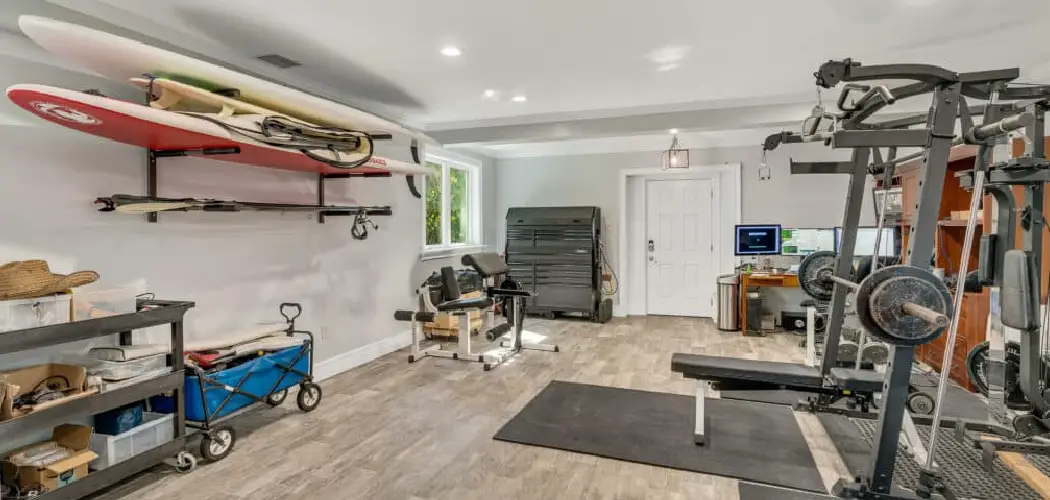Keeping your garage cool can be a challenge, especially during the hot summer months. A sweltering garage not only makes working or spending time in the space uncomfortable but can also lead to damage for any items stored inside, particularly tools or electronics sensitive to heat.
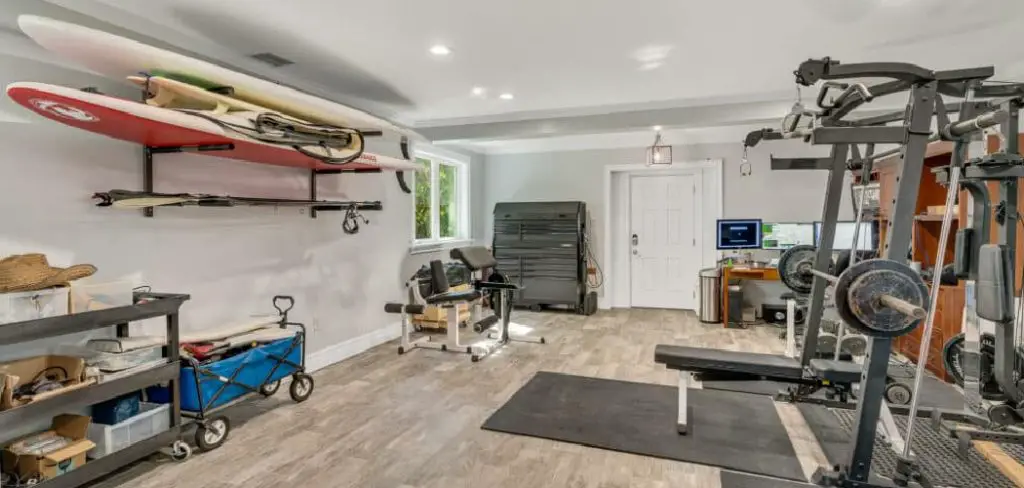
By implementing a few effective solutions, you can lower the temperature of your garage and make it a more usable and pleasant environment year-round.
This guide on how to make my garage cooler will explore practical steps to help cool down your garage and protect your belongings.
Why is a Cool Garage Important?
A cool garage is essential for several reasons. Firstly, it provides a more comfortable working or storage space during the hot summer months. This can make DIY projects or repairs much more enjoyable and productive.
Secondly, excessive heat in the garage can damage items stored inside, such as tools and electronics. High temperatures can lead to warping, melting of plastic components, and even potential fire hazards. By keeping your garage cooler, you can protect your valuable possessions from potential damage.
Lastly, a cool garage can also help lower your energy bills. If your garage shares a wall with your home or has living space above it, excess heat in the garage can transfer into your home, making it harder to cool and causing your cooling costs to increase. By insulating and properly ventilating your garage, you can prevent this heat transfer and keep both your garage and home cooler.
Needed Materials
- Insulation Materials (E.g. Fiberglass Batts, Foam Board)
- Weatherstripping
- Caulk or Spray Foam Insulation
- Ventilation System (E.g. Vents, Exhaust Fans)
- Garage Door Insulation Kit
- Window Insulating Film or Shades/Blinds for Windows
- Light-colored Paint for Walls and Ceiling (Optional)
11 Simple Steps on How to Make My Garage Cooler
Step 1: Check for Gaps and Cracks
- Inspect your garage walls, doors, windows, and ceiling for any gaps or cracks where air can leak in.
- Use weather stripping to seal around garage door frames and caulk or spray foam insulation for any gaps in walls or ceilings.
- This will help prevent hot air from entering your garage and keep the cool air inside.
Step 2: Install a Ventilation System
- A ventilation system such as vents or exhaust fans, can significantly improve airflow and reduce heat buildup in your garage.
- Place them strategically throughout the space to allow for proper circulation of air.
- Vents can be installed on the walls, while exhaust fans can be mounted on the ceiling.
Step 3: Insulate Your Garage Door
- The garage door is often one of the biggest sources of heat gain in a garage.
- To combat this, consider installing a garage door insulation kit, which can help regulate temperature and prevent heat loss.
- Additionally, insulating your garage door can also reduce noise from outside sources.
Step 4: Invest in a Portable Air Conditioner
- If you live in an area with high temperatures, investing in a portable air conditioner may be worth considering.
- This can provide immediate relief from the heat in your garage and make it more comfortable to work in during the hot summer months.
Step 5: Optimize Lighting
- Incandescent bulbs produce a significant amount of heat, so consider switching to LED or fluorescent lights, which generate less heat.
- You can also install motion-sensor lights to save on energy and reduce heat when the garage is not in use.
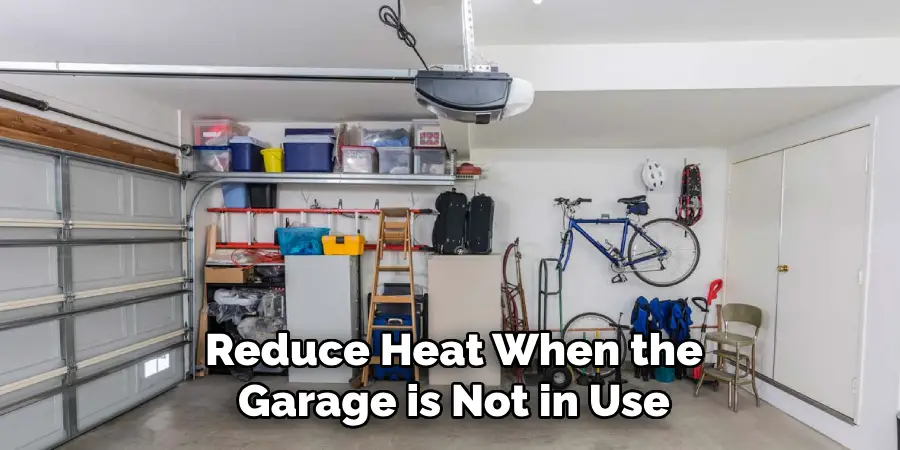
Step 6: Storing Items
- Keep flammable items away from potential heat sources like light fixtures and appliances.
- Properly store chemicals and fuels in a well-ventilated area to prevent heat build-up and potential fires.
Step 7: Insulate the Garage
- Installing insulation in your garage can help regulate temperature and reduce heat transfer from outside.
- This will also help keep your garage warm during colder months, making it more comfortable for storage or working.
- Insulating your garage can also help reduce noise from outside, making it a quieter space.
Step 8: Add Lighting
- Proper lighting is important for both safety and functionality in the garage.
- Consider adding additional light fixtures or installing motion-sensor lights to make navigating through the garage easier.
- You can also add task lighting above workbenches or areas where you frequently work on projects.
Step 9: Utilize Wall Space
- Make use of wall space by installing shelves, hooks, and pegboards to keep items organized and off the ground.
- This will not only free up floor space but also make items easily accessible when needed.
- You can also use wall-mounted cabinets or magnetic strips to store smaller items like tools and hardware.
- Labeling shelves and storage containers can also help you keep track of what is stored where in the garage.
Step 10: Create Zones
- Consider dividing your garage into zones based on functionality, such as a gardening zone, a sports equipment zone, a workshop zone, etc.
- This will make it easier to find and access specific items without having to search through everything in the garage.
- It can also serve as a visual reminder of where items should be returned after use.

Step 11: Regularly Declutter
- Make it a habit to regularly declutter your garage and get rid of items that are no longer needed or used.
- This will prevent clutter from building up and make it easier to maintain an organized space.
- Donate or sell items in good condition, recycle any materials that can be recycled, and properly dispose of any broken or unusable items.
Following these steps on how to make my garage cooler will help you keep your garage organized and functional. Remember to regularly assess your storage needs and make adjustments as necessary. A well-organized garage not only makes it easier to find what you need but also creates a safer environment for you and your family. Happy organizing!
Additional Tips
- During hot summer days, try using a fan to circulate air and create a cooling breeze in your garage.
- Regularly check the doors and windows of your garage for any cracks or gaps that could be allowing hot air to enter. These can easily be sealed with weather stripping or caulk.
- If you have a large garage with high ceilings, consider installing a ceiling fan to help distribute cool air and regulate the temperature.
- Make use of vertical space by installing shelves above your cars or using overhead storage racks for rarely used items.
- Label boxes and bins clearly to make it easier to find what you need without having to dig through everything.
- Consider investing in a dehumidifier if your garage tends to get humid. This will not only make it more comfortable but also prevent mold and mildew from forming on your belongings.
- Utilize wall space by hanging tools and equipment on pegboards or installing wall-mounted shelves.
- Keep a fire extinguisher in your garage, especially if you store flammable materials like gasoline.
- Regularly sweep and clean the floor to prevent dust and debris from accumulating. This will also make it easier to spot any leaks or spills.
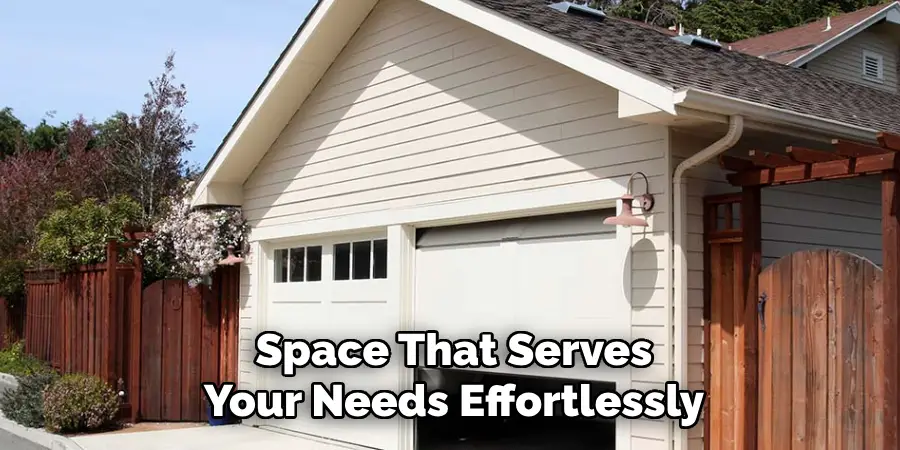
Frequently Asked Questions
Q: How Often Should I Clean and Organize My Garage?
A: It’s recommended to do a thorough cleaning and organization once every 6 months, but you should also regularly sweep and tidy up as needed. The frequency of cleaning may also depend on how often you use your garage and the amount of clutter inside.
Q: How Can I Maximize Space in My Garage?
A: One way to maximize space is by using wall-mounted shelves and hooks to store items vertically. You can also invest in storage solutions such as overhead racks or cabinets to utilize the space above your head. Another tip is to declutter regularly and only keep necessary items in your garage. This will not only create more space but also make it easier to find things when you need them.
Q: What Should I Do with Hazardous Materials in My Garage?
A: Hazardous materials should never be stored in your garage as they can pose a serious safety risk. Instead, dispose of them properly at designated facilities or follow the guidelines for disposing of hazardous waste set by your local government. This will prevent potential harm to yourself and the environment.
Q: What Can I Do to Keep My Garage Organized?
A: Some tips for keeping your garage organized include regularly decluttering and donating or disposing of items you no longer need, using shelves and bins to store similar items together, and labeling containers for easy identification. You can also consider investing in storage solutions such as pegboards, bike hooks, and overhead racks to maximize space. Additionally, make it a habit to put things back in their designated spot after each use to maintain organization. Overall, finding a system that works for you will help keep your garage neat and functional.
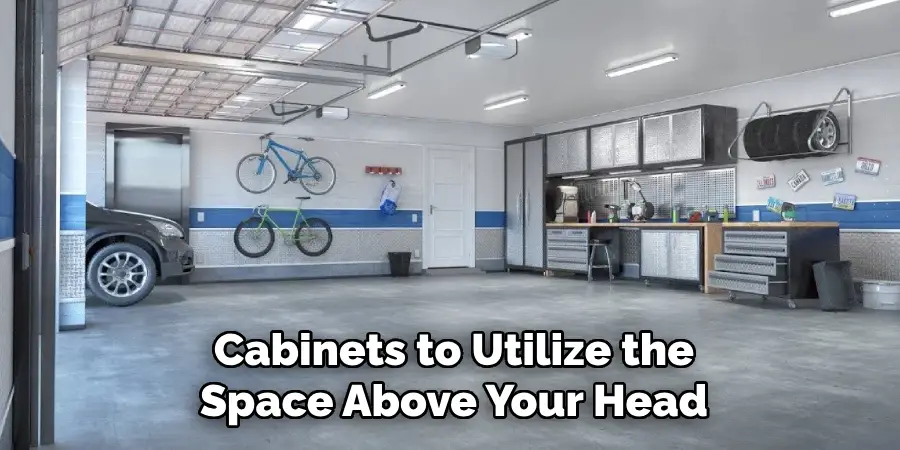
Conclusion
Maintaining an organized garage not only improves the functionality of the space but also reduces stress and enhances efficiency in your daily life. By implementing a well-thought-out system and consistently keeping the area tidy, you can transform your garage into a space that serves your needs effortlessly.
Start small, stay consistent, and enjoy the benefits of an organized and clutter-free garage. Thanks for reading this article on how to make my garage cooler.
I am Rick. I grew up helping my dad with his handyman service. I learned a lot from him about how to fix things, and also about how to work hard and take care of business. These days, I’m still into fixing things- only now, I’m doing it for a living.
I’m always looking for new ways to help people grow and develop. That’s why I have created this blog to share all my experience and knowledge so
that I can help people who are interested in DIY repair.

